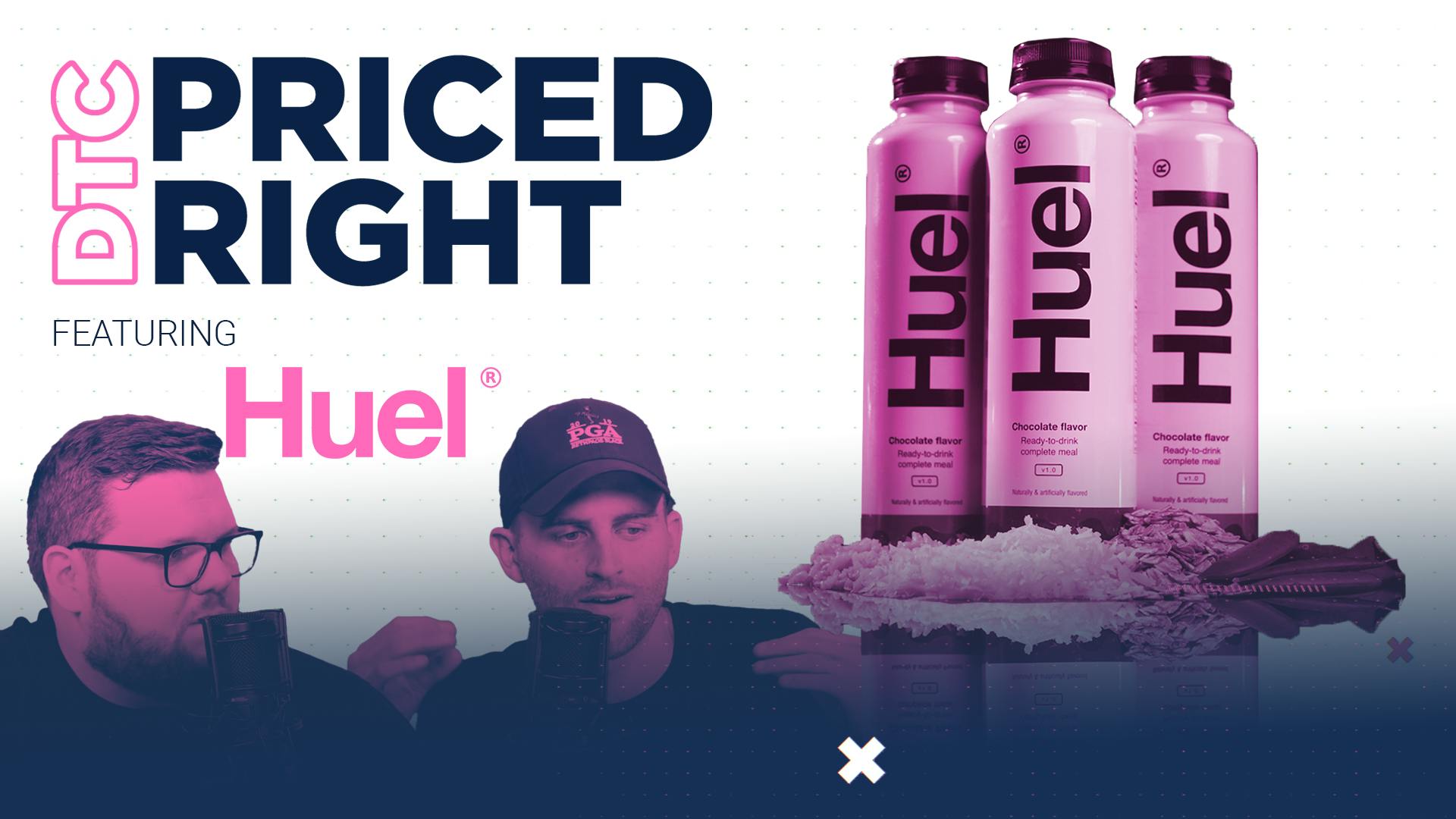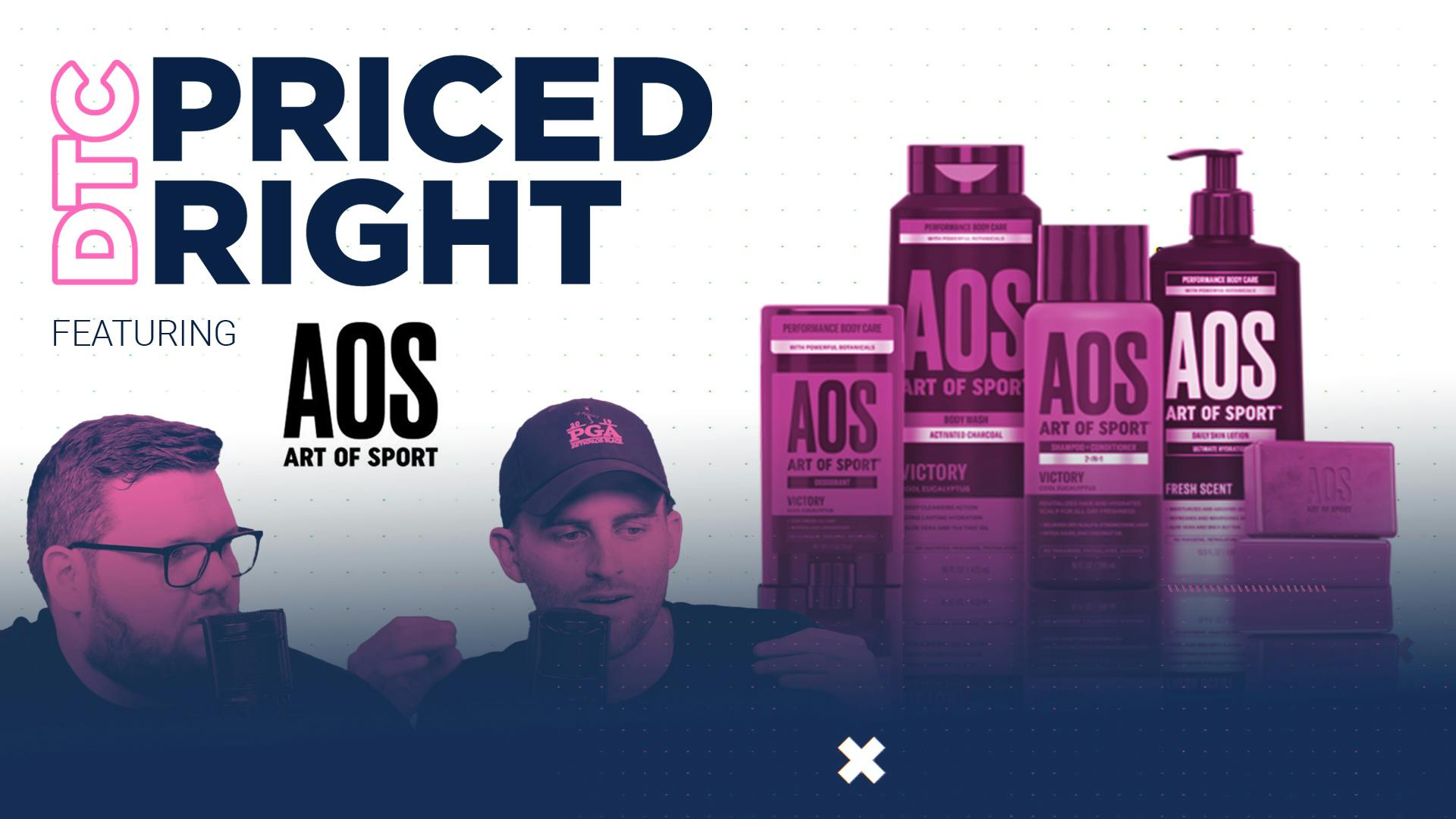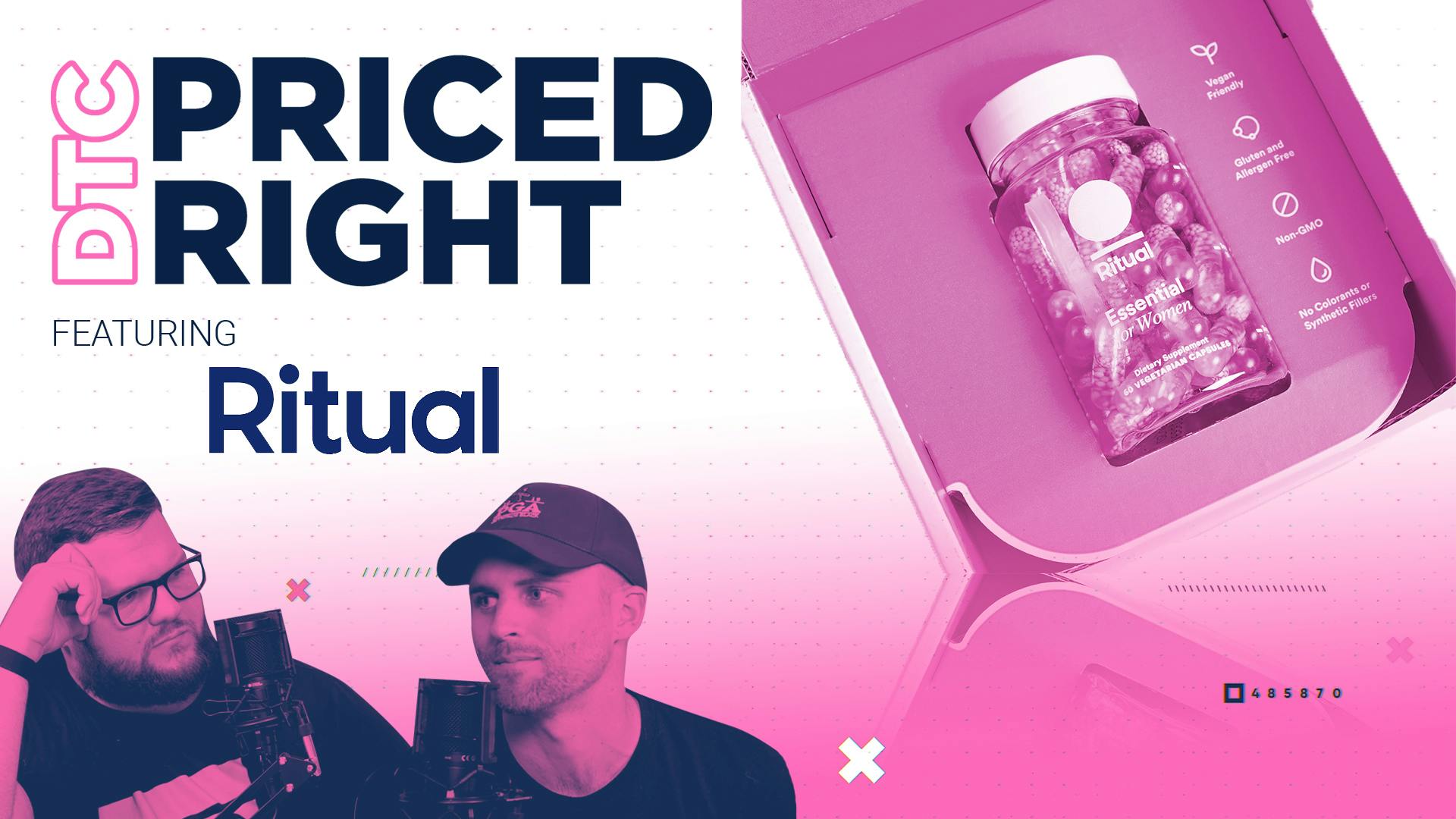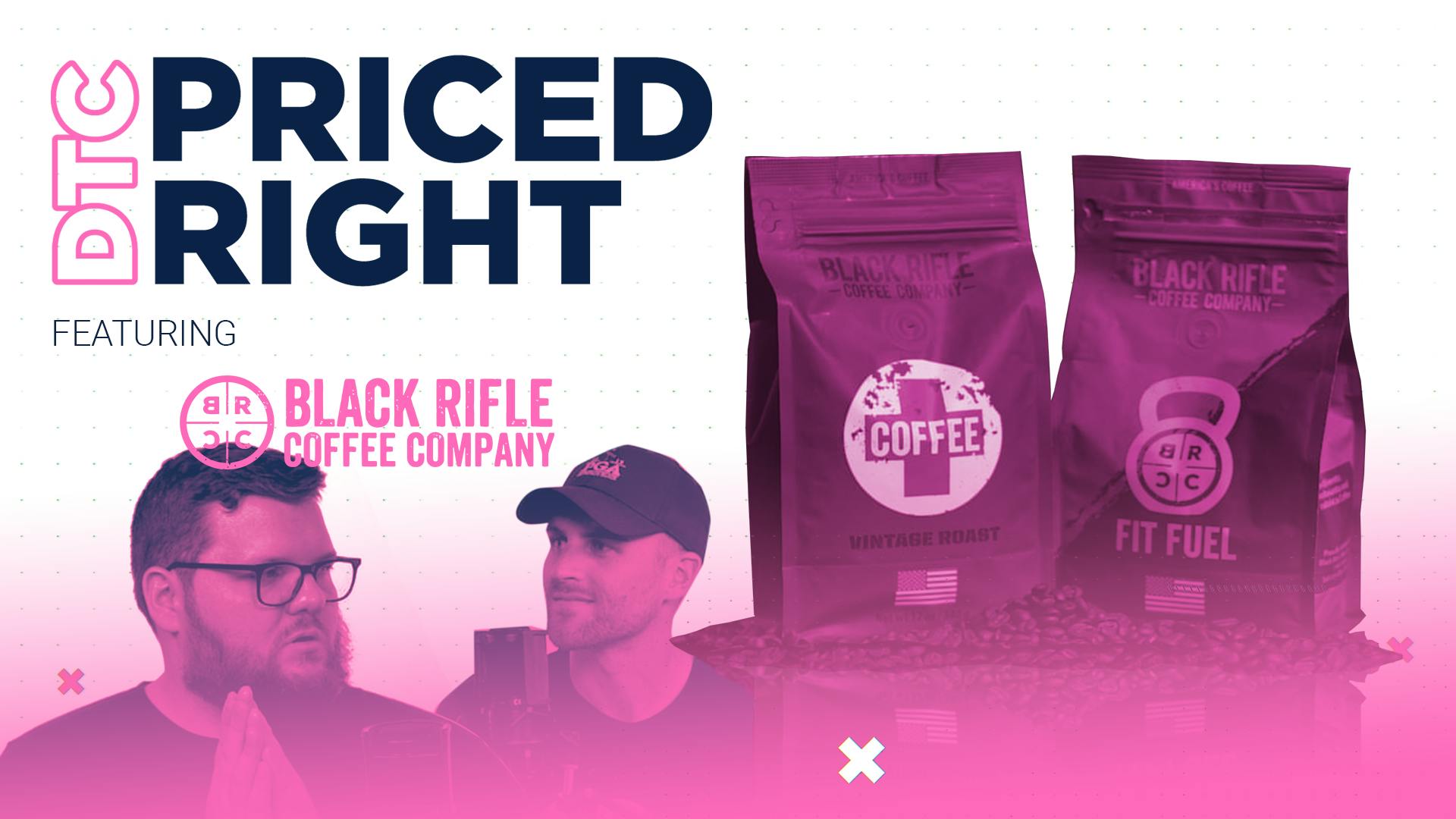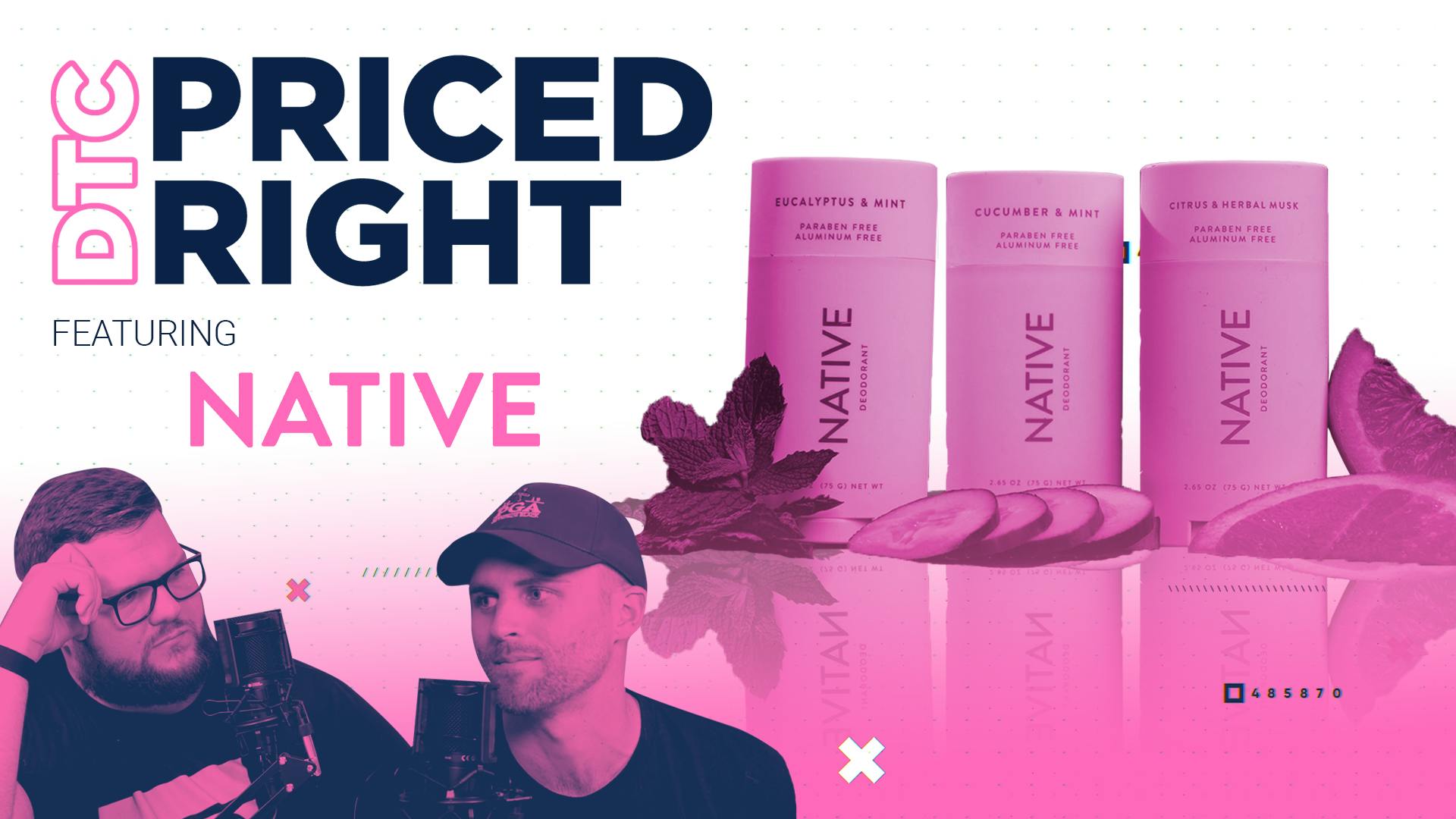
Is Billie missing a few spots?
This episode might reference ProfitWell and ProfitWell Recur, which following the acquisition by Paddle is now Paddle Studios. Some information may be out of date.
Please message us at studios@paddle.com if you have any questions or comments!
This week we're going to learn a lot from a company that actually took on the pink tax. The pink tax is essentially a strategy that charges more for products marketed specifically toward women than those marketed for men, despite the products being identical. We're talking about Billie.
Billie recognized an unjust problem in the market and decided to do something about it. They took on the pink tax and challenged it. They also latched on to something obvious—men and women shave differently. And their success was instant, blowing through their first year's sales goal in four months, leading to an acquisition by Proctor and Gamble just three years after launching. The focus on their customers is what has led to their phenomenal success, but they're still missing some key spots.
Below are some valuable takeaways you can implement in your own business.
- Lean into the market frustration.
Billie does really well utilizing the pink tax frustration to their advantage. - Once you have a user, make sure you're spreading across their use cases.
Have multiple products or multiple variations of the product.
Find and focus on products that break that 20% willingness-to-pay threshold - Understand how pricing shifts based on usage frequency.
Address the differences within the market with willingness to pay and frequency of usage.
Billie's success
Billie's success stems from two big themes:
First, they called B.S. on the pink tax, a pricing strategy that charges women 10-15% more for the same products, but instead they're pink and advertised with models that make you feel bad. Billie priced their products the same as the mens and even came out with the Pink Tax Rebate, a cheeky ad campaign that educated women on just how much they were getting overcharged.
Billie also focused on their customers, latching on to something so obvious—men and women shave differently. Through endless surveys and prototypes, Billie discovered women have to shave 10x the surface area as men, navigating countless curves and angles with more soap that ends up getting stuck in common razors that keep falling off the shower wall.
This led to the Cadillac of women's razors—the creme de la creme of women's razors—Billie's flagship. Billie's rounded edges safely glide across knees with no nicks or cuts. They're encased in shaving soap for a quick shave and have more space between each cartridge's five blades to keep hair and lather from plugging up. And dang are they beautiful...
Women love them, so much so that Billie blew through their first year's sales goal in just four months, leading to an acquisition by industry behemoth Proctor and Gamble just three years after launching. All because they focused on the customer and the customer loved them in kind through thousands and thousands of glowing reviews.
The pink tax
Fun fact. I was born 15 minutes away from where King Gillette was born. That was actually his name. Anyway, talking about the razor market, I think a more interesting thing to talk about is this whole concept of the pink tax. So Gillette got caught selling the exact same razor to women—I can't remember the exact line that it was—but one of the lines was the exact same razor as the men’s, with maybe a few modifications. Like a Quatro or something like that. It was the exact same, but it had a ridiculous difference in price.
What we have found with the pink tax, is sometimes women are willing to pay more. And that's just straight up, but it's kind of like a chicken or the egg. Are they willing to pay more because they've been anchored for so long to expect to pay more for certain things? Or are they willing to pay more because they just have a differentiated value at how they look at things? And what I really like about products like Billie, is that they took this razor blade model and turned it on its head. Why is the regular razor so expensive? It doesn't make any sense. And I think that Billie, as well as some of these other folks, started asking why the pink tax is a thing. Why be subject to that when the razors aren't that expensive, and why can’t something be created that's iterative and actually much better for women in particular.
Jenny, my better half, she uses Billie religiously. It comes every single month, and I've really enjoyed the experience that she's had. The brand permeates a kind of fairness and quality for women, so that they’re not stuck with brands that are just strewn throughout CVS.
Razors in general, I feel like, are one of those incumbent brands that were just absolutely, men. It's their destiny to get disrupted by the internet. And I think Billie has done a really good job in this market in particular, because we've seen this with a lot of different DTC brands where they authorize the market in a good way. They let you know that the market is messed up and that they’re fixing those errors, so you should buy from them. That's a very simplistic way of looking at what they've done, but I think it's been really powerful for their brand, and has made them really successful as well.
Let’s take a look at their pricing page and then dig into the data?
Billie's pricing page
The site in general is what you expect out of a DTC brand—joyful and clean. I think one of their tag lines is, "Razor for all Womankind." I love that. And I'm sure they got annoying questions like, “Why are you giving up half the market,” or something like that. Dollar Shave Club, as of right now, they're very male focused, especially with their branding and these types of things. But the women's market is huge. Billie does this right. They know their customer and they're basically setting up their product marketing based on their customer, which is obviously a really good thing.
One of the other things that's really powerful about their pricing model, and something that you can learn from, is that they have a really good breakdown of frequency to figure out the frequency of shipping. So what I mean by that, is when you come here, the question is how often do you shave? If it's every day, they're going to deliver it once a month. If it's a few times a week, they can deliver it every two months. And we haven't seen a lot of brands contextualize this in the right way.
We’ve seen this with some of the coffee companies who have done well, but some of the other beauty products or hygiene products, they've just asked how often they want it. And frankly, even when I was shaving my face pretty frequently, I couldn't tell you it was everyday—I can't even remember. We talked about this with deodorant too. There are these weird consumer products that I don't know if I use it once a month. I just buy it when it's out.
And I think that here, I trust Billie a little bit too, because Billie can kind of contextualize and say, "Hey, if you're doing this everyday, you should really have a new razor every month." Which some women might not know. I don't know if that's a natural thing that's known, but I'm sure there's definitely people who don't know. And then what’s powerful is when you click into this you go to the "add to cart." What I really love about this and the second big thing I think you could take away from the pricing page, in addition to a lot of other things we're probably not going to talk about, is the add-on flow. I think it’s brilliant.
Some of the add-on flows we see on DTC sites or different brands have 10 different things you can add to the cart. You're hoping that people just throw something at the wall and add something to your cart. But in actuality what we found, time and time again, is this analysis paralysis and this paradox of choice where they just don't pick anything. These add-ons relate to what they're already buying. Sometimes these add-ons are just random and other things are perfectly aligned. I also love the bounciness of the images. It brings their site to life. So, all of a sudden, we go to the checkout, we get to the checkout, and then we're in this traditional flow, which I think is really powerful.
The one thing that I would like to see in this pricing page—we're not going to talk about the data around this, but we have done this in other episodes—is some sort of offer for the frequency of things getting sent. They have the once a month and every other month, but give me an offer to sign up for six months or a year, or something like that. But overall, I think one of the biggest things that they could be doing is locking that lifetime value into my actual purchase. And there's enough people, just given the branding, given the word of mouth that they come from, where I'd be more than willing to probably sign up for a longer term, and signing up directly for the product.
Let's take a look at the data.
Data and analysis
Lean into the market frustration.
Lean into the frustration with the market, particularly in this case with the pink tax. There's a little bit of a trust issue when it comes to these products once people start talking about the pink tax and they’re being overcharged or undercharged. What we found is that though the pink tax might not be justified in the sense of the same product, there is a higher willingness to pay from women's perspective versus men. So what you're seeing here, for a monthly razor product, the median willingness to pay for men is right around $9 per month. The median for women is closer to about $16 per month.

What I think Billie should do is realize that there is this differentiation and be okay with being priced around that $9 mark. But ultimately making sure that they're adding in different products as they are, in order to take advantage of the extra willingness to pay. So basically being like "Hey we could charge you this... we could charge you $15. The willingness to pay is there because you've been conditioned, you've been told that this is how much you should be paying. But that's not true."
I think that's what they should lean more into in their messaging, but also making sure that they have the product suite to basically add more average order value to the actual flow. I think that's something that's really powerful, that just because you can it doesn't mean you should. But, it does mean that maybe you add even more value to justify the price that you could be getting.
I love the idea of them drilling down into that pain point and calling it out so that people can see that on their websites. Spend less and then, to your point, there are so many add-ons they can purchase. The big takeaway for all of you is to understand where the mind of your user is when they're purchasing a product like this, and what the market looks like. A lot of DTC brands are entering the market as a disruptor because they start studying a particular space and then realizing, "Oh, this is BS, that's BS. This should be changed, this should be better. This should be organic, et cetera." Understand and lean into that particular mindset, but make sure you call it out throughout the process.
I know Billie has a couple of different places on their website where they talk about the pink tax, but I think this is something they could do really powerfully.
Once you have a user, make sure you spread across their use cases.
So, when you think about different brands within these spaces, they start off with razors, deodorant, or other things, and then they have this mantra of taking over the bathroom. I've heard that phrase used by some of these founders.
In the case of feminine hygiene, feminine beauty products, and things like that, there are countless different products that could be gone into. I think Billie chooses a really good lane here, of what they could offer their customers. And what we've done, is a little bit of work for them in terms of identifying, "Hey, are the products that you chose, like, you know the right ones, at least from a data perspective?" Obviously they know more data than we do, but at least from a market research perspective, what are some other options that they should be or could be going into?
Value Matrix
DTC You're about to see something called a value matrix. Here, we collected data from the group comparing feature preferences and plotted those on the horizontal axis. More valued features on the right, less valued on the left. We then collected willingness to pay for the overall product and plotted that based on their number one feature preference on the Y axis. Analyzing data in this manner, allows us to determine which features are differentiable. Add-ons, core, or commoditized for each segment.
What you see here is that things like the wonder wipes that they have aren't necessarily the most valued across the board, but the people who do want those are basically willing to pay about 20% higher than the median. So it's a really good opportunity as an add-on. Other pieces like lotion and body wash, which are a little bit more prominent, they break that 20% threshold that we're looking for when it comes to an add-on. Lip balm is one of those things that’s a good add on, but it's not a home run.

The big takeaway for you and your business is again, it's very rare to have one product or one product line. Normally, you have a product and the variations you need in order to attract different types of buyers. And then you either have to go into additional products that are essentially tangential, or you have to go into depth where you can actually differentiate the value, meaning there's going to be some premium versions of your product in order to expand across the user base, especially in such a large market.
Understand how pricing shifts based on usage frequency
Finally, understand how pricing shifts based on usage frequency. When we dug into the data is a differential in willingness to pay based on frequency of actually using the product. We see people that are using their razor daily or a few times per week, are willing to pay almost three times what people are willing to pay once per week. Obviously they have in their flow, an outline for the people that are high usage users. There's definitely a chance here for them to offer something interesting for the once-per-week crowd. Maybe a lower frequency of orders, or a cheaper product down market or something like that—something that's really customized to that crowd.

The big takeaway here and what I think Billie does well is, based on the frequency, they just change how often they ship, which changes how often they get billed. I think that backs into this, but what might happen, and I don't think this is happening just given the differentials here, but what might happen is that $9 price point might be a turnoff, and it might look not too cheap, but definitely cheaper than people are willing to pay. In terms of the daily users, how does usage or the use case change willingness to pay or value in the eyes of your customer and then make decisions based on that. Because ultimately, you have high fragmentation of your customer in a consumer space, even if you're in a comically narrow market that you need to make sure you understand and adapt to.
Let's recap.
- Lean into the frustration with the market. I think a lot of brands have done this really well. The pink tax is a really frustrating piece of the razor market in particular. I think Billie does a really good job here, but I want them to amplify it even further.
- Once you have a user, make sure you're spreading across their use cases. It's really hard to build a large DTC brand without having multiple products, or having multiple variations of the product. Your goal might not be to build a really big brand, but either way, it's going to make it a lot easier. You just have to be really careful about picking the right things. You want to find those particular products that break that 20% willingness-to-pay threshold to focus on, and offer up your user base.
- Understand how pricing shifts based on usage frequency. We saw this crystal clear with their customer base. The people that are shaving more, are willing to pay more for the product. Billie has to address these kinds of differences within the market and with willingness to pay and frequency of usage.
I think it's a really big thing for you and your business to always understand the use case and how that shifts depending on a higher frequency, lower frequency, or willingness to pay within the segments that you're targeting.

